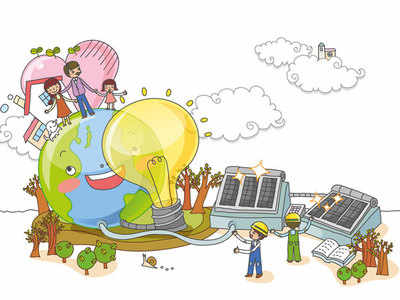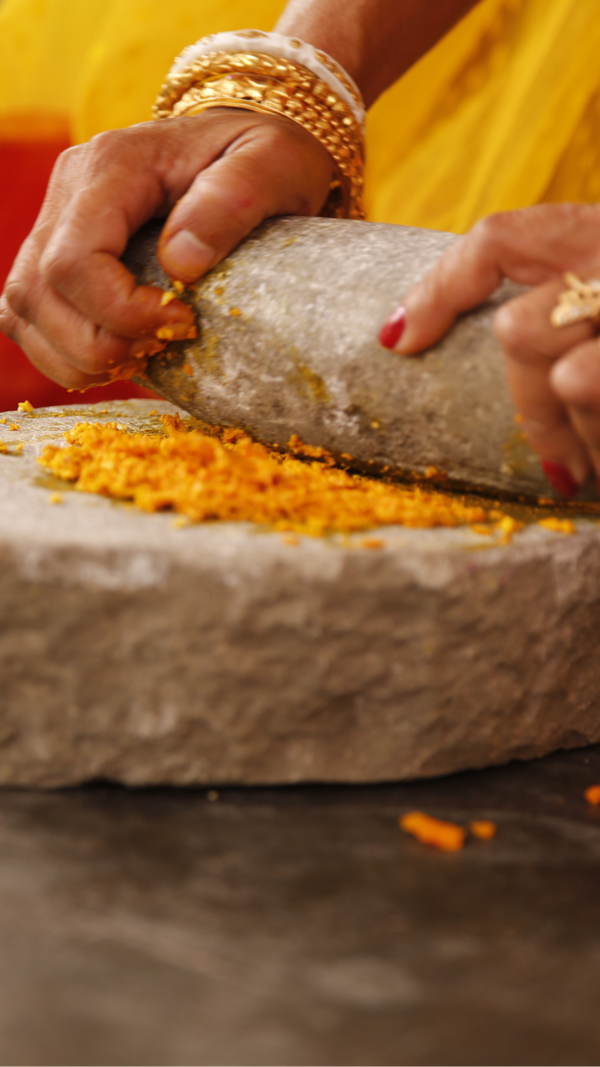Trending
This story is from April 16, 2018
Building a fancier, yet sustainable future
We spoke to experts in the field to understand how Chennai’s architectural layout will change a decade hence…

Chennai, even before it came to be known as Madras, has been the hot bed for several styles of architecture. From Dravidian designs and colonial style to art deco and high-rises, the city boasts of various buildings that prove the land has witnessed style innovations. Over the years, we’ve lost many of the landmarks to time, and nature. But will we now get our act together and save the city’s skyline? We spoke to experts in the field to understand how Chennai’s architectural layout will change a decade hence…
Optimal use of open spaces
Thanks to exploding population, residential complexes and gated communities are springing up in every corner of the city.But over the years, will we be able to maintain the ratio between constructed space and open space? Shripal Munshi (principal architect with Shripal and Venkat Architects, SVA) is optimistic. He says, “The ratio can be maintained, but the city limits will have to be expanded. The new land can be used to provide affordable housing, which is where the massive shortfall is. But even if the ratio is maintained, how much of that free space is available for public benefit? That’s why we urgently need an urban park strategy, which has to be implemented in reality. And the open spaces have to be connected by infrastructure.”
Padma Shri CN Raghavendran (MD, CRN) admits that housing the growing population in Chennai is a challenge, but not a huge problem. “The government and city managers will look at coming up with implementable and unambiguous development plans. They will have to judiciously rework land-use and urban densification by creating affordable and available land-banks.”
While skyscrapers and gated communities will continue to be favoured, experts believe that bungalows and villas will not find priority. Shripal says, “There are sensible and cost-effective medium-density development models that will be implemented in the city. Also, in Chennai, there are only a few areas that can take tall towers. I think that bungalow culture is a relic of the past. Although excellent to live in and use for the owners, bungalows are a reflection of the economic chasm we live in. So there are two sides of the story.” He also points out that senior living communities will come up in a big way. “There’s a large population of seniors and they need campuses like these. Changing demographics, changing time and changing market conditions will give rise to newer opportunities,” he adds.
Will infrastructure support the growing needs?
Architecture is interconnected with infrastructure and the expansion of city, and the economics are driven by various factors. Raghavendran says that for a comfortable living experience, we should be prepared to tackle looming issues. “Frequent calamities, both man-made and natural, uncontrolled abuse of land, unauthorised exploitation of natural resources, including waterways, add to the complexities. Creaking infrastructure, mounting problems in urban mobility, burgeoning waste management and perennial water scarcity will definitely affect our planning,” he says. Shripal says that there’s a lot of untapped potential in terms of public infrastructure. “I was told that there are about 38 bus terminals that are under-utilised and under developed. Apart from bettering traffic condition, you can use the space for infrastructural improvement. More than 30 years ago, this concept had found favour in the UK and western countries. The same has been done in Gujarat, in places like Rajkot, Ahmedabad and Surat, and in North East as well. We’ll need more public-private partnership to make it happen,” he says.
Global trends will influence Indian designs…

International trends that will catch up in Chennai go beyond styles and forms, and that includes twisting super high-rises like in Dubai or China, says Raghavendran, adding, “What we need in the future are innovative designs, sensible adaptation of conventional wisdom and traditions that have evolved successfully for the Chennai milieu, materials with low-carbon footprint and recyclable content, less-wasteful and speedier construction technology, and others that combine functionality for optimisation of livable, healthy and comfortable spaces, which are in compliance with environmental and safety regulations.” Aparna Nambiar, student of architecture, believes that design-wise, there will be more influences from the West as well. “Urbanisation and expansion of the city limits will change the imageability of the city as a whole. While we will continue to look at the West to learn more about planning and sustainability, there will still be some structures that are built mindlessly to cater to the growing population,” she says. Shripal adds, “We can tap the full potential of pre-fabricated and pre-cast construction technologies. If we adopt them across all building types and not just for infrastructure, we will save time, remove wastage, and improve precision and the carbon footprint.”
But we’ll still borrow from the past
If there’s one thing that we’ll learn from our past, it’s to bring back climate-sensitive architecture. Anthony Raj (from Centre for Indigenous Architecture) says, “It is said that the introduction of cement in Tamil Nadu in the 1930s marked the end of the Dravidian architecture. Our architects abandoned the traditional wisdom and fell for the concrete gods. But now, we simply need to incorporate lessons into our current urban planning from the past. This means, we will have to drastically reduce the use of cement, concrete and steel. For instance, our home on ECR was built without dumping rubble outside during construction. We only depend on water from the well, and recycle waste water within the campus. The walls are left exposed, There are wood doors/windows, verandas and tile overhangs — to keep the inner building cool, and well protected from direct sunlight and heat. In fact, there is minimal dependence on public utilities like electricity, water and sewerage management.” Agreeing with him is Raghavendra, who adds, “The principles of natural ventilation and thermal mass of buildings, courtyard that enables natural day lighting and cross ventilation to manage thermal comfort are some elements from the past that will be researched upon.” Another area that we will learn from the past is tackling calamities, like the massive flood that turned the city upside down a few years ago. Raghavendra says, “Grand Anaicut and the interlinked lake system perfected by Cholas and Pallavas are lessons in effective water management. The water bodies, natural wetlands, surplus rainwater carriers (like the now-defunct Buckingham Canal which managed floods in the past) and temple tanks storing rain water are natural assets that served the city. The only way for a stress-free future is to take care of them, as modern technology like desalination cannot provide what nature endows us with.”
Smart, energy-efficient buildings will be the future
While many residential complexes and industries have already subscribed to rooftop solar panels, people in the city will now look at more ways to save energy and become green. Vikram Dileepan (founder & CEO of SolarTown) says, “The real saving in the future will be buildings that are built from the scratch. There’s this concept of building integrated photovoltaic, where building materials themselves generate energy. This is called the BIPV, and this concept is popular in European countries. In Scandinavian countries, there are zero energy buildings — it means the building materials themselves absorb and reflect sun and generate energy. This concept will catch up in India soon.” LEDs and rooftop solar are bare minimum technologies to invest in to save energy. He adds, “We can also install temperature controlling thermostats, which work with home appliances. This is catching up in smart homes, where the thermostats control your refrigerator, AC, and determines what the optimum cut-off point is.”
Will there be enough stress on conservation of heritage?

Madras has never been too keen on preservation, says historian Venkatesh Ramakrishnan. He adds, “Even during the colonial days, huge structures like the wall around the Black Town and the bulwark on the beach vanished without traces. In the last quarter, we lost Hotel d’Angeli’s on Anna Salai and Binny building in Armenian Street. Luckily, the heritage buildings that remain now are public buildings, like religious structures, clubs, colleges and government offices, which can be conserved owing to public sentiment. It will be difficult to maintain those in private sector, like book shops, hotels and offices, because of the huge capital involved. Robert Chisholm’s Indo-Saracenic buildings are luckily government-owned and will remain so by default. Of course, they will be altered and new wings will be added to make official work possible. A handful of British bungalows along the Adyar River will also survive, including the Music College. Many heritage structures continue to survive within the Theosophical Society. While public buildings will be maintained owing to our people’s sentiments, we are helpless when it comes to survival of heritage buildings in the hands of private entities.”
WISH LIST FOR THE FUTURE

We need more urban spaces in the city.
We should build to context. A sense of urban design and where to build what will become more critical.
We should become environmental and energy conscious.
We should pay attention to quality of design. Hopefully, the next generation will insist on aesthetically appealing models.
In the West, large buildings are commissioned by the government. Here, we don’t emphasise much on the structures. I hope the government and political establishments understand the importance of landmarks and magnificent buildings and conduct worldwide search to first recognise good architecture and then go about building them.
- Producer Shashikanth, also an architect who runs Space Scape
Optimal use of open spaces
Thanks to exploding population, residential complexes and gated communities are springing up in every corner of the city.But over the years, will we be able to maintain the ratio between constructed space and open space? Shripal Munshi (principal architect with Shripal and Venkat Architects, SVA) is optimistic. He says, “The ratio can be maintained, but the city limits will have to be expanded. The new land can be used to provide affordable housing, which is where the massive shortfall is. But even if the ratio is maintained, how much of that free space is available for public benefit? That’s why we urgently need an urban park strategy, which has to be implemented in reality. And the open spaces have to be connected by infrastructure.”
Padma Shri CN Raghavendran (MD, CRN) admits that housing the growing population in Chennai is a challenge, but not a huge problem. “The government and city managers will look at coming up with implementable and unambiguous development plans. They will have to judiciously rework land-use and urban densification by creating affordable and available land-banks.”
Living communities will find takers
While skyscrapers and gated communities will continue to be favoured, experts believe that bungalows and villas will not find priority. Shripal says, “There are sensible and cost-effective medium-density development models that will be implemented in the city. Also, in Chennai, there are only a few areas that can take tall towers. I think that bungalow culture is a relic of the past. Although excellent to live in and use for the owners, bungalows are a reflection of the economic chasm we live in. So there are two sides of the story.” He also points out that senior living communities will come up in a big way. “There’s a large population of seniors and they need campuses like these. Changing demographics, changing time and changing market conditions will give rise to newer opportunities,” he adds.
Will infrastructure support the growing needs?
Architecture is interconnected with infrastructure and the expansion of city, and the economics are driven by various factors. Raghavendran says that for a comfortable living experience, we should be prepared to tackle looming issues. “Frequent calamities, both man-made and natural, uncontrolled abuse of land, unauthorised exploitation of natural resources, including waterways, add to the complexities. Creaking infrastructure, mounting problems in urban mobility, burgeoning waste management and perennial water scarcity will definitely affect our planning,” he says. Shripal says that there’s a lot of untapped potential in terms of public infrastructure. “I was told that there are about 38 bus terminals that are under-utilised and under developed. Apart from bettering traffic condition, you can use the space for infrastructural improvement. More than 30 years ago, this concept had found favour in the UK and western countries. The same has been done in Gujarat, in places like Rajkot, Ahmedabad and Surat, and in North East as well. We’ll need more public-private partnership to make it happen,” he says.
Global trends will influence Indian designs…

International trends that will catch up in Chennai go beyond styles and forms, and that includes twisting super high-rises like in Dubai or China, says Raghavendran, adding, “What we need in the future are innovative designs, sensible adaptation of conventional wisdom and traditions that have evolved successfully for the Chennai milieu, materials with low-carbon footprint and recyclable content, less-wasteful and speedier construction technology, and others that combine functionality for optimisation of livable, healthy and comfortable spaces, which are in compliance with environmental and safety regulations.” Aparna Nambiar, student of architecture, believes that design-wise, there will be more influences from the West as well. “Urbanisation and expansion of the city limits will change the imageability of the city as a whole. While we will continue to look at the West to learn more about planning and sustainability, there will still be some structures that are built mindlessly to cater to the growing population,” she says. Shripal adds, “We can tap the full potential of pre-fabricated and pre-cast construction technologies. If we adopt them across all building types and not just for infrastructure, we will save time, remove wastage, and improve precision and the carbon footprint.”
But we’ll still borrow from the past
If there’s one thing that we’ll learn from our past, it’s to bring back climate-sensitive architecture. Anthony Raj (from Centre for Indigenous Architecture) says, “It is said that the introduction of cement in Tamil Nadu in the 1930s marked the end of the Dravidian architecture. Our architects abandoned the traditional wisdom and fell for the concrete gods. But now, we simply need to incorporate lessons into our current urban planning from the past. This means, we will have to drastically reduce the use of cement, concrete and steel. For instance, our home on ECR was built without dumping rubble outside during construction. We only depend on water from the well, and recycle waste water within the campus. The walls are left exposed, There are wood doors/windows, verandas and tile overhangs — to keep the inner building cool, and well protected from direct sunlight and heat. In fact, there is minimal dependence on public utilities like electricity, water and sewerage management.” Agreeing with him is Raghavendra, who adds, “The principles of natural ventilation and thermal mass of buildings, courtyard that enables natural day lighting and cross ventilation to manage thermal comfort are some elements from the past that will be researched upon.” Another area that we will learn from the past is tackling calamities, like the massive flood that turned the city upside down a few years ago. Raghavendra says, “Grand Anaicut and the interlinked lake system perfected by Cholas and Pallavas are lessons in effective water management. The water bodies, natural wetlands, surplus rainwater carriers (like the now-defunct Buckingham Canal which managed floods in the past) and temple tanks storing rain water are natural assets that served the city. The only way for a stress-free future is to take care of them, as modern technology like desalination cannot provide what nature endows us with.”
Smart, energy-efficient buildings will be the future
While many residential complexes and industries have already subscribed to rooftop solar panels, people in the city will now look at more ways to save energy and become green. Vikram Dileepan (founder & CEO of SolarTown) says, “The real saving in the future will be buildings that are built from the scratch. There’s this concept of building integrated photovoltaic, where building materials themselves generate energy. This is called the BIPV, and this concept is popular in European countries. In Scandinavian countries, there are zero energy buildings — it means the building materials themselves absorb and reflect sun and generate energy. This concept will catch up in India soon.” LEDs and rooftop solar are bare minimum technologies to invest in to save energy. He adds, “We can also install temperature controlling thermostats, which work with home appliances. This is catching up in smart homes, where the thermostats control your refrigerator, AC, and determines what the optimum cut-off point is.”
Will there be enough stress on conservation of heritage?

Madras has never been too keen on preservation, says historian Venkatesh Ramakrishnan. He adds, “Even during the colonial days, huge structures like the wall around the Black Town and the bulwark on the beach vanished without traces. In the last quarter, we lost Hotel d’Angeli’s on Anna Salai and Binny building in Armenian Street. Luckily, the heritage buildings that remain now are public buildings, like religious structures, clubs, colleges and government offices, which can be conserved owing to public sentiment. It will be difficult to maintain those in private sector, like book shops, hotels and offices, because of the huge capital involved. Robert Chisholm’s Indo-Saracenic buildings are luckily government-owned and will remain so by default. Of course, they will be altered and new wings will be added to make official work possible. A handful of British bungalows along the Adyar River will also survive, including the Music College. Many heritage structures continue to survive within the Theosophical Society. While public buildings will be maintained owing to our people’s sentiments, we are helpless when it comes to survival of heritage buildings in the hands of private entities.”
WISH LIST FOR THE FUTURE

We need more urban spaces in the city.
We should build to context. A sense of urban design and where to build what will become more critical.
We should become environmental and energy conscious.
We should pay attention to quality of design. Hopefully, the next generation will insist on aesthetically appealing models.
In the West, large buildings are commissioned by the government. Here, we don’t emphasise much on the structures. I hope the government and political establishments understand the importance of landmarks and magnificent buildings and conduct worldwide search to first recognise good architecture and then go about building them.
- Producer Shashikanth, also an architect who runs Space Scape
End of Article
FOLLOW US ON SOCIAL MEDIA








